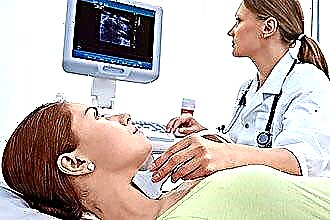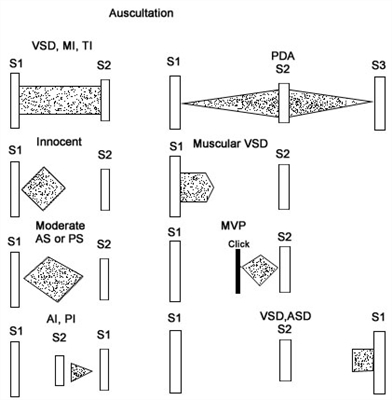Lachrymation, sneezing, and severe runny nose are typical manifestations of respiratory illness. Inflammation of the nasopharynx inevitably leads to hypersecretion of nasal mucus and, as a result, rhinitis and associated symptoms. The provocateurs of inflammation are often pathogenic viruses, especially adenoviruses, coronaviruses and rhinoviruses. How to be treated if there is a runny nose and watery eyes?
Causes
 Why do tears, sneezing and runny nose appear? The mentioned symptoms most often indicate an infectious or allergic lesion of the mucous membranes of the nose and paranasal sinuses. Sneezing and rhinitis are protective reactions of the body, due to which pathogenic viruses, microbes and allergens are removed from the respiratory tract. Tearing is a consequence of inflammation of the nasolacrimal canals, leading to a violation of the outflow of fluid from the lacrimal sac.
Why do tears, sneezing and runny nose appear? The mentioned symptoms most often indicate an infectious or allergic lesion of the mucous membranes of the nose and paranasal sinuses. Sneezing and rhinitis are protective reactions of the body, due to which pathogenic viruses, microbes and allergens are removed from the respiratory tract. Tearing is a consequence of inflammation of the nasolacrimal canals, leading to a violation of the outflow of fluid from the lacrimal sac.
The lack of temperature with rhinitis and lacrimation in about half of the cases indicates the development of an allergic reaction.
Constant sneezing is an alarming symptom that precedes the development of colds. During a forced and abrupt exhalation, the respiratory tract is cleared of irritating substances - dust, animal hair, gas molecules, viruses, etc. If the first manifestations of the disease are not stopped in time, this will subsequently lead to the development of a cold. Inflammation of the mucous membranes stimulates the secretion of nasal mucus, which causes nasal congestion.
Probable diseases
What diseases cause a runny nose and watery eyes? Most often, nasal congestion, sneezing and lacrimation occurs against the background of an infectious lesion of the nasopharynx. The most common diseases that lead to the appearance of pathological symptoms include:
- rhinopharyngitis;
- allergic rhinitis;
- flu;
- cold;
- sinusitis;
- conjunctivitis;
- hay fever.
Surely, you can determine the cause of the inflammation of the respiratory system after examination by an ENT doctor. Many people do not pay enough attention to the process of treating colds, which causes the development of rather serious complications. It should be understood that the progression of the infection is fraught with damage not only to the throat and nose, but also to the paranasal sinuses.
Purulent inflammation of the airways can lead to the development of sinusitis, sphenoiditis, sinusitis, and even rhinogenic brain abscess.
The provoking factors can contribute to the development of ARVI, which include:
- hypovitaminosis;
- exacerbation of chronic diseases;
- iron deficiency (anemia);
- hypothermia;
- allergy to food, pollen, medicines;
- thermal and chemical burns of the nasopharyngeal mucosa;
- addictions (smoking, alcohol abuse);
- abuse of antibacterial agents.
In the mucous membranes of the respiratory tract, infection develops very quickly. That is why the belated treatment of a common cold can lead to dire consequences, up to meningitis and pyelonephritis.
Treatment principles
How to treat if your eyes are watery with a runny nose? As already mentioned, lacrimation in most cases occurs against the background of inflammation of the nasolacrimal canal. With adequate treatment of inflammation in the nasopharynx, the outflow of tear fluid is normalized, thereby eliminating unwanted manifestations of the disease.
As a rule, treatment begins with taking medications that directly eliminate the cause of the development of rhinitis - the infection. In case of a cold, the pathogenic flora in the nasopharynx can be destroyed with the help of antiviral agents: Anaferon, Groprinosin, Ingavirin, Lavomax, Arbidol, etc.  In addition, it is recommended to use symptomatic medications, thanks to which it is possible to stop coughing, sneezing, lacrimation and rhinitis.
In addition, it is recommended to use symptomatic medications, thanks to which it is possible to stop coughing, sneezing, lacrimation and rhinitis.
It is possible to speed up the process of cleansing the respiratory tract from infection with the help of sanitizing procedures and inhalations. Irrigation of the nasopharynx with anti-edematous and wound-healing drugs can quickly facilitate nasal breathing and reduce the severity of inflammation in the mucous membrane. With allergic lesions of the ENT organs, it is possible to stop the symptoms of the disease with the help of antihistamines of systemic and local action.
Antiallergic drugs
What should you do if your eyes are watery with a runny nose? A combination of symptoms often indicates the development of allergic rhinitis. If an irritating substance (allergen) enters the respiratory system, it leads to inflammation of the mucous membranes. It should be noted that at the same time, the general well-being of the patient is practically not disturbed - there are no fever, body aches and sore throat.
Allergic rhinitis is not a harmless disease, since severe swelling of the nasal mucosa can lead to inflammation of the auditory tube and, as a result, the development of otitis media. If your eyes begin to watery, and itching or burning occurs in your nose, you should seek help from an immunologist or allergist. The following antihistamines can be used to relieve allergic manifestations:
- "Hifenadine";
- "Tsetrin";
- Loratadin;
- Astemizole;
- "Trekhsol".
Modern antiallergic drugs affect the mechanisms of development of edema in the mucous membrane of the nasopharynx and nasolacrimal canal. Therefore, with the timely use of drugs, after a couple of days, rhinitis disappears in patients and lacrimation stops.
Nebulizer inhalation
Aerosol inhalation is one of the most effective physiotherapeutic procedures, thanks to which it is possible to quickly eliminate almost all local manifestations of the common cold - nasal congestion, sneezing, coughing, sore throat, etc. Unlike tablets for oral administration, the aerosol penetrates directly into the lesions. Due to this, the concentration of antimicrobial, antiviral and anti-inflammatory substances rapidly increases in the inflamed tissues.
In order for the nose to stop pawing, it is necessary to eliminate inflammation and swelling in the mucous membrane. For these purposes, anti-edematous, immunostimulating, antibacterial and antiviral drugs can be used:
- Interferon;
- Tonsilgon;
- Chlorophyllipt;
- Rotokan;
- "Furacilin".
To increase the effectiveness of nebulizer therapy, it is recommended to drip vasoconstrictor drops into the nose - "Rinza", "Galazolin", "Naphtizin", etc. before inhalation.
Sanitation of the nasopharynx
How to treat if the nose is stuffy and the eyes are watery? Nasal drops help to eliminate inflammation in the nasal cavity, but they practically do not affect the condition of the mucous membrane in the paranasal sinuses. In order to surely wash out the mucus and infectious agents contained in it from the nasopharynx and sinuses, it is recommended to carry out sanitizing procedures.
Rinsing the nose with saline solutions helps to normalize the outflow of intercellular fluid from the lesions. In addition, preparations based on sea salt have a beneficial effect on the condition of the mucous membrane, accelerate its regeneration and increase local immunity. Sanitizing procedures are recommended for the development of a cold of any etiology. Anti-inflammatory and antiseptic agents destroy disease-causing agents in the ENT organs and thereby accelerate recovery.
Important! It is impossible to throw your head back while rinsing the nose, as the liquid can penetrate into the auditory tube and provoke inflammation in it.
For rinsing the nasopharynx, the following can be used:
- "Physiomer" - a solution based on sea salt, has a decongestant and wound healing effect;
- "Quicks" is a mucolytic agent that helps to liquefy and remove mucus from the paranasal sinuses and nasal passages;
- Dolphin is an isotonic solution based on sea salt that accelerates the healing process of the nasopharyngeal mucosa.
Sanitation of the nose should be carried out at least 3-4 times a day in case of exacerbation of respiratory diseases. Regular lavage of the nasopharynx and irrigation of the mucous membrane can eliminate a severe runny nose within a few days.



